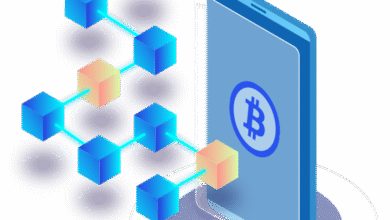
In the world of computing, memory plays a central role in determining speed, multitasking capability, and overall performance. As technology evolves, so does memory. For years, DDR4 RAM has been the standard for desktops, laptops, and gaming rigs. But with the arrival of DDR5 RAM, users are now facing an important question: is it time to upgrade, or should you stick with DDR4 in 2025?
This comprehensive guide from The Global Newz explores the differences between DDR4 and DDR5, the benefits and drawbacks of each, and practical advice on which memory type suits your needs best.
What is DDR RAM?
DDR stands for Double Data Rate, a type of synchronous dynamic random-access memory (SDRAM). It has been through multiple generations: DDR, DDR2, DDR3, DDR4, and now DDR5. Each new generation improves on the previous one by offering faster speeds, greater efficiency, and higher capacity potential.
Today, DDR4 remains widespread, while DDR5 is the new standard slowly gaining adoption in modern systems.
Key Differences Between DDR4 and DDR5
To decide which memory is right for you, it’s important to compare them side by side.
| Feature | DDR4 RAM | DDR5 RAM |
| Launch Year | 2014 | 2020 (consumer adoption 2021 onwards) |
| Base Frequency | 1600 – 3200 MHz | 4800 – 8400 MHz (higher in 2025) |
| Bandwidth | Up to ~25.6 GB/s | Up to ~67 GB/s |
| Latency | Lower (CL14 – CL20) | Higher (CL30+) |
| Power Efficiency | 1.2V | 1.1V (with power management on module) |
| Module Density | Up to 32GB | Up to 128GB+ per module |
| Availability | Widely available, cost-effective | Still maturing, higher prices |
Advantages of DDR4 RAM
Even in 2025, DDR4 RAM holds strong relevance for many users.
- Affordability: DDR4 is significantly cheaper, making it ideal for budget-conscious users.
- Mature Ecosystem: Broad compatibility with existing motherboards, CPUs, and platforms.
- Lower Latency: Many DDR4 kits deliver tighter timings, which benefits certain workloads and games.
- Availability: DDR4 modules are widely available in different capacities, from budget sticks to high-end enthusiast kits.
For everyday computing, business use, and even gaming, DDR4 remains a reliable and cost-effective option.
Advantages of DDR5 RAM
DDR5 represents the next leap forward in memory technology.
- Higher Bandwidth: Speeds starting at 4800 MHz and climbing beyond 8000 MHz in 2025.
- Future-Proofing: Designed to support modern CPUs and workloads, DDR5 ensures your system won’t feel outdated anytime soon.
- Better Efficiency: With on-module power management, DDR5 is more efficient at higher performance levels.
- Larger Capacities: Modules can scale far beyond DDR4, making them ideal for high-demand applications such as AI, data processing, and professional content creation.
DDR5 excels in future-ready desktops, gaming rigs, and workstations designed to handle intensive workloads.
DDR4 vs DDR5 for Gaming
One of the most common questions is whether DDR5 delivers a noticeable gaming advantage.
In 2023–2024, benchmarks showed only minor improvements in frame rates between DDR4 and DDR5. However, by 2025, newer titles optimised for DDR5 and CPU architectures supporting faster memory are beginning to reveal bigger performance gaps.
- DDR4 Gaming Memory: Still performs admirably in 1080p and 1440p gaming. Lower latency sometimes gives DDR4 an edge in specific titles.
- DDR5 Gaming Memory: Excels in high-resolution and CPU-intensive games. Combined with modern GPUs, DDR5 shows tangible improvements in 1440p and 4K gaming, as well as smoother multitasking during gameplay and streaming.
If you’re building a new gaming system today, investing in Gaming Memory with DDR5 support is the smarter choice, as it ensures your rig is ready for future titles and workloads.
DDR4 vs DDR5 for Productivity and Workloads
The performance gap between DDR4 and DDR5 becomes more significant in professional tasks.
- DDR4 for Productivity: Still sufficient for office work, browsing, media consumption, and even moderate workloads such as video editing and programming.
- DDR5 for Heavy Workloads: Essential for advanced tasks like 3D rendering, AI model training, large-scale data processing, and scientific computing. Its higher bandwidth ensures faster access to large data sets and smoother multitasking.
If you’re a professional or enterprise-level user, DDR5 provides performance and scalability that DDR4 cannot match.
Cost and Availability in 2025
Price remains one of the biggest differences between DDR4 and DDR5.
- DDR4: Affordable and easily available, with a wide range of kits from budget to enthusiast options.
- DDR5: Prices have dropped since launch but are still higher than DDR4. Premium high-speed kits can be particularly expensive.
For users building systems on a budget, DDR4 is the more accessible option. However, if cost is not the main factor, DDR5 offers stronger long-term value.
Compatibility Considerations
Before choosing DDR4 or DDR5, it’s critical to ensure platform compatibility.
- DDR4 Motherboards: Cannot support DDR5 modules.
- DDR5 Motherboards: Do not accept DDR4.
- CPU Support: Modern CPUs from Intel (12th Gen onwards) and AMD (Ryzen 7000 series onwards) include DDR5 support, though some boards are DDR4-only.
When upgrading, you may need to replace not just your RAM, but also your motherboard and CPU to move from DDR4 to DDR5.
DDR4 vs DDR5 for Laptops
The choice between DDR4 and DDR5 isn’t just limited to desktops. Many modern laptops also offer DDR5 configurations.
- DDR4 in Laptops: Still widely used, especially in budget-friendly and business laptops. Offers stable performance at lower costs.
- DDR5 in Laptops: Found in premium ultrabooks and gaming laptops, providing better performance, power efficiency, and multitasking.
When shopping for Laptop Memory upgrades, it’s important to check the system’s compatibility with DDR4 or DDR5 before buying.
DDR4 vs DDR5 for Desktops
Desktop PCs benefit the most from high-performance memory.
- DDR4 Desktops: Perfect for users who want a reliable system for office tasks, light gaming, and productivity without spending extra.
- DDR5 Desktops: Ideal for enthusiasts, gamers, and professionals who need cutting-edge performance.
If you are upgrading or building a new PC in 2025, check out Networking Corner’s range of Desktop Memory to find the right option for your system.
Who Should Stick with DDR4 in 2025?
- Budget-conscious users who want affordable upgrades.
- Businesses running standard applications that don’t require high-end performance.
- Gamers who play older or less demanding titles at 1080p or 1440p.
- Users with older systems that are not compatible with DDR5.
Who Should Upgrade to DDR5 in 2025?
- Gamers building new rigs with the latest CPUs and GPUs.
- Content creators and professionals needing faster rendering, editing, or modelling.
- Enterprises running data-heavy workloads such as AI, databases, or cloud computing.
- Users who want to future-proof their systems for the next 5–7 years.
The Future of RAM Beyond DDR5
Looking ahead, DDR5 is not the end of the road. Research and development in memory technology continue, with DDR6 already on the horizon and experimental memory types like 3D stacked RAM and non-volatile memory pushing the boundaries of performance.
For now, DDR5 offers the right balance of performance, scalability, and longevity, making it the leading choice for new systems in 2025.
Final Verdict: DDR4 or DDR5?
- Choose DDR4 if you’re upgrading an older system, working with a limited budget, or don’t require top-tier performance. It remains a cost-effective and stable solution.
- Choose DDR5 if you’re building or upgrading to a new high-performance system in 2025, whether for gaming, professional workloads, or future-proofing your setup.
The decision ultimately depends on your budget, use case, and hardware compatibility. For many, DDR5 is the natural step forward, while DDR4 remains relevant for practical, budget-friendly upgrades.
Conclusion
In 2025, DDR4 continues to be a dependable memory option, but DDR5 is rapidly becoming the standard for new builds. From Gaming Memory to professional workstation setups, DDR5 delivers the speed, efficiency, and scalability that modern workloads demand.
For users looking to upgrade their desktop memory or laptop memory, Networking Corner provides a wide selection of DDR4 and DDR5 options, ensuring you can find the perfect fit for your system. Whether you choose the affordability of DDR4 or the cutting-edge performance of DDR5, your memory upgrade will have a lasting impact on performance, productivity, and overall computing experience.




